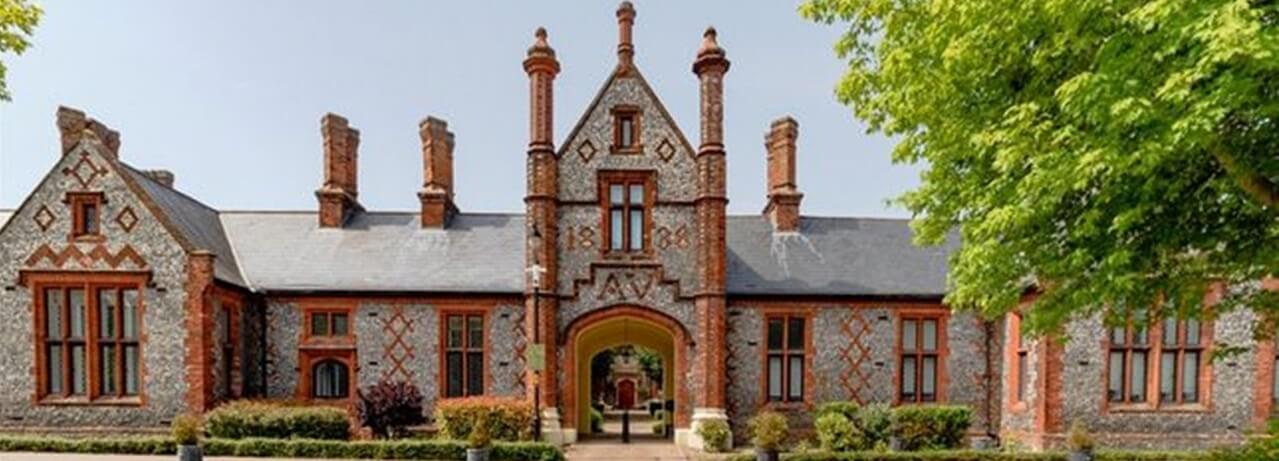By Alison Bailey
The Great and the Good
Placenames give us clues to our history, particularly local history, as the names of our streets and buildings usually reflect local events and local people. King George V Road and the King George V Playing Fields are an exception to this. Some names were evidently inspired by nature or geography, such as Cherry Lane or Station Road and others were inspired by people, whether they are the great and the good, humble farmers, or artisans. Other names were inspired by historical events and can be self-explanatory such as Lollards Close, named for Amersham’s Protestant Lollard martyrs burnt at the stake in the early 16th century.
Origins of the name Amersham
Amersham itself seems to be derived from the name of an early Anglo-Saxon ruler. Earlier spellings of Amersham are Agmodesham and Elmodesham, after Ealmond or Ealhmund, reputed King of Kent in 784. He is thought to be the father of Egbert, the King of Wessex, who for a period was considered the ‘wide-ruler’ of Anglo-Saxon lands. Ham or hamm is the Anglo-Saxon word for a settlement or village in a water meadow. The first houses were on the banks of the river Misbourne and therefore the origin of the town’s name is ‘Ealmond’s village by the water’.
Saints
The names of the local parish churches, dedicated to individual saints, are frequently used in place names. St Mary’s Court and St Mary’s CofE Primary School are in Amersham and St Leonards Road is in Chesham Bois.
Perhaps it is surprising that Amersham’s long association with St Katherine has not been recorded in a local place name. The patron saint of lacemakers, St Katherine had her own chantry chapel in St Mary’s Church and an important charitable association, the Fraternity of St Katherine, established in the 15th century. Her saint’s day, November 25, was a major celebration, with the statue led around the town in her finest robes.
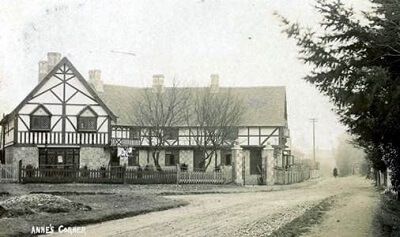
The origin of Anne’s Corner is a mystery. This is the name of land at the eastern edge of Chesham Bois Common, and the unusual U-shaped terrace of three cottages built there around 1910, at the junction of Bois Lane and North Road. Is Anne, St Anne, the Patron Saint of mothers, and therefore connected to Saint Leonard, the Patron Saint of women in labour? Or does it refer to Lady Anne Cheyne who died in 1640 and is buried in the churchyard? Or another, unknown Anne?
Landowners
The wealthy landowning class is, as expected, well represented, reflecting the power and influence they enjoyed. The Drakes have been Lords of the Manor of Amersham since the early 17th century. Drakes Road is just off Quarrenden Road and I’m sure the residents of that road are delighted that the developer didn’t use the later family name of Tyrwhitt Drake as that is always difficult to spell! There are also the Drake Almshouses on the High Street, founded by Sir William Drake in 1657.
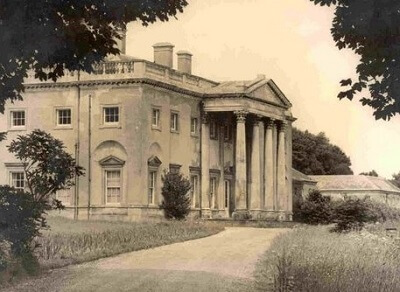
The ancestral home of the Drake family, Shardeloes Manor was named after the Norman, Adam de Shardeloes, who was granted part of the Amersham estate in 1308. It was later owned by the Brudenell, Cheyne and Tothill families before Joan Tothill married Francis Drake and their son, William, inherited the manor in 1626.
The Brudenell family gave Brudenell Close its name and Amersham School was originally known as Brudenell Secondary Modern. The Cheyne family gave their name to Cheyne Close in Chesham Bois, where they were also Lords of the Manor for over 300 years. Cheyne Walk, in Chelsea was the site of Charles Cheyne’s London home after his marriage to Lady Jane Cavendish. The Russells, the Earls and then Dukes of Bedford, who inherited from the Cheynes, have Russell Close and Bedford Avenue in Little Chalfont. Cavendish Close in Little Chalfont was named for Lord Chesham, whose family name was Cavendish. His estates included land in Chesham Bois, the Chalfonts and Amersham Common.
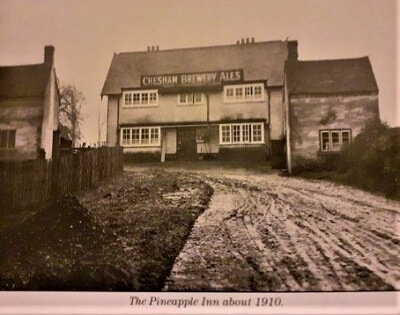
Extensive land at Amersham Common was owned by the Mason Pomeroy family whose vast wealth came from slave trading and plantations in the West Indies. This is why the Caribbean Island of Montserrat has a village called Amersham, now a suburb of the capital Plymouth which was buried by volcanic ash in 1995. There is a Pomeroy Close, off Hundred Acres Lane, and the Pomeroy Public House. This was known as the Pineapple for many years, a name repeated in the neighbouring Pineapple Road. The name originates from the Mason Pomeroy trade in the tropical fruit. Pineapples also decorate the gate posts at the entrance to the family estate, Beel House.
The Wellers who owned Amersham’s brewery from 1775 until 1929, became an important landowning family. Weller Road and Weller Close are both close to the site of George Weller’s country estate, The Plantation, on Amersham Common, which is remembered in Plantation Road and Plantation Way. The Wellers bought the original house and land, known as Large Plantation, from Lord Chesham. Presumably the land was named for a crop of trees planted there and does not reflect the Weller family connections with Jamaica.
The Worthies
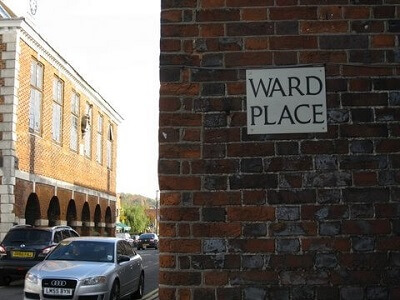
The Worthies is a Tudor building in the High Street which is named after the wall painting in no. 56 from the 1550s of six of the Nine Worthies, from the Ancient World, the Bible, and early Christians. Local place names, however, have also been used to commemorate local citizens worthy of note. These include Ward Place, also on the High Street, named after George Ward, who lived here. He was the town’s eminent photographer, the manufacturer of the ‘Wizard’ bicycle and the owner in 1902 of one of Amersham’s first cars the ‘Orient Express’.
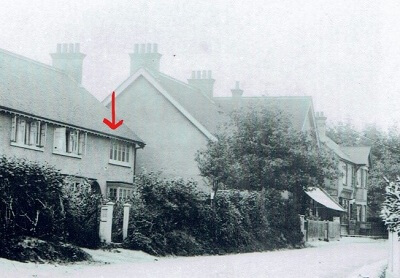
Macdonald Close in Chesham Bois is named for the first Labour Prime Minister, James Ramsay MacDonald, who rented a cottage, Lindfield, in Chesham Bois for his wife Margaret and their six children. This was a weekend home where the family could escape the stresses of political life in London.
Milton Lawns is named for the 17th century, Republican writer, John Milton who completed Paradise Lost whilst living in a small cottage (now a museum, Milton’s Cottage) in Chalfont St. Giles after fleeing the outbreak of the Bubonic plague in London in 1665.
Kennards Court off Woodside Road is named after John Harold Kennard, the prolific architect who designed many of Amersham Arts and Crafts houses and shops. Alfred Woodley, a local builder whose builder’s yard was on Lexham Gardens, gave his name to Woodley Court. Woodley was a Liberal councillor and chairman of Amersham Rural District Council for many years. He also built and co-owned, The Regent, Amersham’s 700 seat Art Deco cinema, which was demolished in 1962.
Gilbert Scott Court apartments (banner image) are named for Sir George Gilbert Scott, the architect of the original building, the Amersham Union Workhouse, who lived for a time at Latimer. Perhaps less well known is the origin of the Henry Allen Nursery on Mitchell Walk. Henry J Allen, the Governor of Wichita, Kansas, was the President of the Californian Save the Children Federation. In 1941 Californian subscribers provided the money required to build a nursery in Amersham, to help married women work, as a way of aiding the British war effort without becoming involved militarily. Henry Allen even made the dangerous journey to Amersham to turn the first spadeful of earth on the building site.
Elangeni School in Chesham Bois has an unusual name. It was named after the home of the Colenso family which used to be on the site. Elangeni is a Zulu word (and the name of a Zulu tribe) which means “where the sun shines through “. Frank Colenso, who built the house was the elder son of Bishop John Colenso, first Bishop of Natal.
A notable omission is perhaps Amyas Connell, the architect of High & Over, which is a Grade II* Listed architectural gem and effectively launched the International Modernist style in Britain.
One definite myth is that Turpin Row was named for the famous highwayman, Dick Turpin. The story goes that on his way to York he escaped from pursuers by dashing upstairs in one cottage, through a row of connecting attics, and down the stairs of another dwelling before escaping out the back into Barn Meadow. In fact, Turpin never came to Amersham and the name came from an 18th century owner, Thomas Turpin.
Women

It is disappointing that more women aren’t commemorated in local place names. Jean Archer, Amersham’s first female mayor has Archer Court on Amersham Road. Day’s Almshouses are a reminder that Harriet Day built these almshouses in 1875 for “six poor women of good character”. However, Henrietta Busk, the first female councillor on Amersham Rural District Council who served from 1910 to 1932, when she retired because of ill-health when she was 87, is not remembered. Nor is Louise Jopling, the celebrity artist and suffrage campaigner, who lived in Chesham Bois. Abrahams Close, off Lincoln Park, is the only reminder of Margery Abrahams, who lived here for over 80 years. She was a pioneering dietitian at St Barts Hospital and helped many during WWII. In addition to finding local accommodation for evacuees and refugees, she also participated in the organisation of the Kindertransport and fostered children herself. The name, Lincoln Park, which she developed in the 1960s on her estate, Chilterns, could be a pun on Abraham Lincoln. But of course, it also references Lincoln Cathedral as shown by the other roads on the estate, Salisbury Close, Canterbury Close, and York Close.
Click on this link to read the second part

